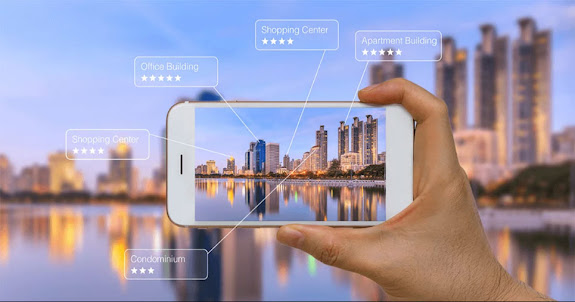The Augmented Reality: What You Need To Know
The concept of augmented reality involves overlaying digital features atop the real world. Augmented reality technology uses clever tracking methods to overlay computer-generated elements over a real environment. It's that simple!
Pokémon Go is an ideal example of augmented reality. A million people explored the outdoors to find and catch new Pokémon in 2016 because of Pokémon Go. It was a game that swept the world.
Your phone tracks your location, your camera films your surroundings, and the app overlays digital Pokémon on top for you to catch. As a result, you'll see Pokémon appear right in front of you when you're in the game! A perfect example of Augmented Reality. This article talks about different elements of AR, how it works, and its major applications.
Augmented Reality: How It Works
Fortunately, augmented reality (AR) is a science fiction trope that has come true! The technology aims to add to, or augment, the physical world. With AR, you can add virtual elements to a movie or game to make it more immersive and interactive.
A smartphone application or headset can create augmented reality effects by overlaying digital information in a real-world environment. But true AR experiences also incorporate other sensory modalities, such as sound, touch, and olfaction, and typically require special accessories.
Different Elements of Augmented Reality
It sounds futuristic and exciting to combine the real and virtual worlds. But can be true with few elements. Augmented reality replaces your unaugmented view with digital imagery by superimposing graphics into your field of vision. AR relies on various gadgets and digital capabilities, such as cameras, sensors, computer vision, and flat surfaces or displays to accomplish this feat.
AR Hardware
Augmented reality does not always require bulky equipment. To overlay AR content, cameras and sensors first collect data about the environment. Then, a computer vision system or processing unit interprets this data and integrates virtual objects into a real-world environment. Finally, the user can view the augmented content on a display.
AR Software
A second element of creating AR content is the software. A developer toolkit integrates computer vision into applications and allows the software to see the world around the user through a camera feed. AR Software provides some key components for programs to map an environment and also enables them to map an environment.
It is crucial to have AR software in order to make virtual experiences appear on real surfaces. Any device that uses motion tracking can determine its position within the given environment.
Additionally, AR software provides light estimation features. As a result of light estimation, the device can perceive the lighting in the environment efficiently.
Applications of AR
Retail:
AR will allow consumers to see how products will look in their own homes before they buy them. It can simplify the buying process. You can already place furniture and other products in your own real-world environment using apps such as Wayfair, Houzz, and Ikea.
Education:
Traditional learning methods are being enhanced by the use of AR in the curriculum. For instance, a smartphone can display additional content or 3D visualizations when scanned with a code on a textbook.
Entertainment and social media:
AR also has a lot of potential for entertainment. Magic Leap, for instance, has spent more than $2.6 billion developing AR goggles and an AR technology platform and continues to attract investment despite not having a commercial product. More accessible platforms such as TikTok have recently introduced branded AR effects that users can add to their videos.
There is no doubt that this is just the beginning of a race to create ever-more compelling AR experiences that blur the line between reality and fantasy. However, it is important to use AR technology in the right direction to leverage your business goals. If you are a tech enthusiast looking to incorporate AR/VR in your industry then visit MAGES Studio today!



Comments
Post a Comment